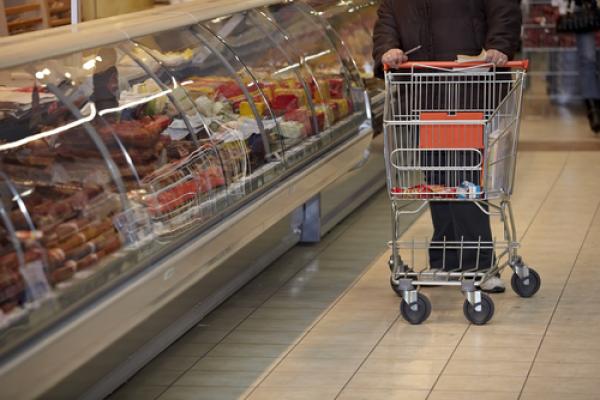“So what are food stamps anyway?” my 8-year-old son, Mattias, asked as I drove him to his summer camp this morning. “Are they, like, stamps that you eat that taste like different foods?”
“Not exactly,” I said.
My family was less than thrilled when I presented the idea of living on the equivalent of what a family of four would receive on food stamps for a week. Actually, the program is now called “SNAP,” which stands for “Supplemental Nutrition Assistance Program,” and involves government-issued vouchers or debit cards, rather than the antiquated stamp method. But the result is the same; we have a lot less to spend on food this week than usual.
“But I don’t want to be poor,” Mattias moaned as I explained the challenge to him.
“We’re not poor,” I said, “but it’s important for us to know what it’s like to struggle to feed our family.”
“Why?”
“Because,” I paused, trying to figure out a way to explain privilege and compassion to a third-grader who was quite content to have all he has, and then some, “Jesus tells us to have a heart for the poor, but how can we really do that if we don’t know anything about what it’s like to live with less?”
“Hmm,” he wrinkled his brow, “I guess we can do it for a few days.”
There have been moments in my life when I’ve gotten a taste of what it’s like. I remember seeing my mom lay all her coupons out, ordering her grocery list by priority, getting part of the way through the list at the store and having to stop because there was no money. There were tears, although I wasn’t exactly sure why. But the hardship was relatively short-lived. My dad got a promotion, mom went back to work, and the fridge stayed full the rest of my childhood.
Then there were the years after college, when I expected the world to come to me on bended knee, offering me the bounty of opportunities I had heard about from my parents, high school counselors, and college professors. Instead, I found myself waiting tables, interning for a music company, and finally landing an assistant manager gig at a record store in the mall. I remember one week in particular when I was out of both food and gas, and it was still five days until the next pay day. I had 20 bucks to make it to Friday, and I sat at the gas pump, anxiously figuring how little I could put in the tank to still get back and forth to work, while hopefully having enough left for three meals a day.
I’ve been broke before, but I’ve never been what I’d consider to be “poor.” Broke is a short-term condition; poor is an inevitable way of life. Broke is asking friends or family for help; broke is having no one else around you in a better state than you’re in to even ask. Broke is buying ramen and rice for a while; poor is imagining what it would be like not to feel hungry or worry about having enough to feed your kids, every day of your life.
So no, I’ve never really been poor.
We get $112 to spend for the week on all of our food as a family of four on the SNAP Challenge. Since we work Sundays and haven’t gone to the grocery store, we had to figure out what it costs to eat what we already had around the house this morning:
- Coffee: 50 cents
- Cereal for three: $1.25
- Milk: 30 cents
- Eggs: 40 cents
The eggs were a contentious issue this morning, as my wife, Amy, had only planned on having one (20 cents). But while she was cooking it, the doorbell rang, and the egg burned before she got back to the stove. She gave it to our dog, Maggie, who scarfed it down and started again.
“We have to account for two eggs,” I said.
“But I only had one.”
“Yeah, but you used two,” I said. Amy shot a stare across the counter that was one of those you-did-this-to-me looks.
Then there’s Mattias’ lunch. The boy eats more than either of us, and usually he packs his own lunch bag. Today I did it for him so I’d know just what we we're in for.
- Sandwich (40 cents)
- Yogurt (35 cents)
- Apple (30 cents)
- Apple sauce (25 cents)
- Pretzel sticks (20 cents)
So by 10 a.m., we’ve spent $3.95. Not too bad, considering we’ve budgeted an average of about $5 a meal for all four of us. But breakfast is arguably the cheapest meal, so it will still take some figuring to get through day one under the red line.
“Daddy,” my 3-year-old daughter, Zoe, looked up at me as I typed up this reflection, “can I have a snack?”
I could feel a little pang of anxiety creep up my neck.
“Are you really hungry,” I asked, “or are you just bored?”
“Really hungry,” she said. “Really, really hungry.”
Add another 35-cent yogurt to the tally. This could end up being a long week.
Christian Piatt is an author, editor, speaker, musician and spoken word artist. He co-founded Milagro Christian Church in Pueblo, Colorado with his wife, Rev. Amy Piatt, in 2004. Christian is the creator and editor of "Banned Questions About The Bible" and "Banned Questions About Jesus." His new memoir on faith, family and parenting is called "PREGMANCY: A Dad, a Little Dude and a Due Date."
Grocery shopping budget, Picsfive / Shutterstock.com
Got something to say about what you're reading? We value your feedback!
